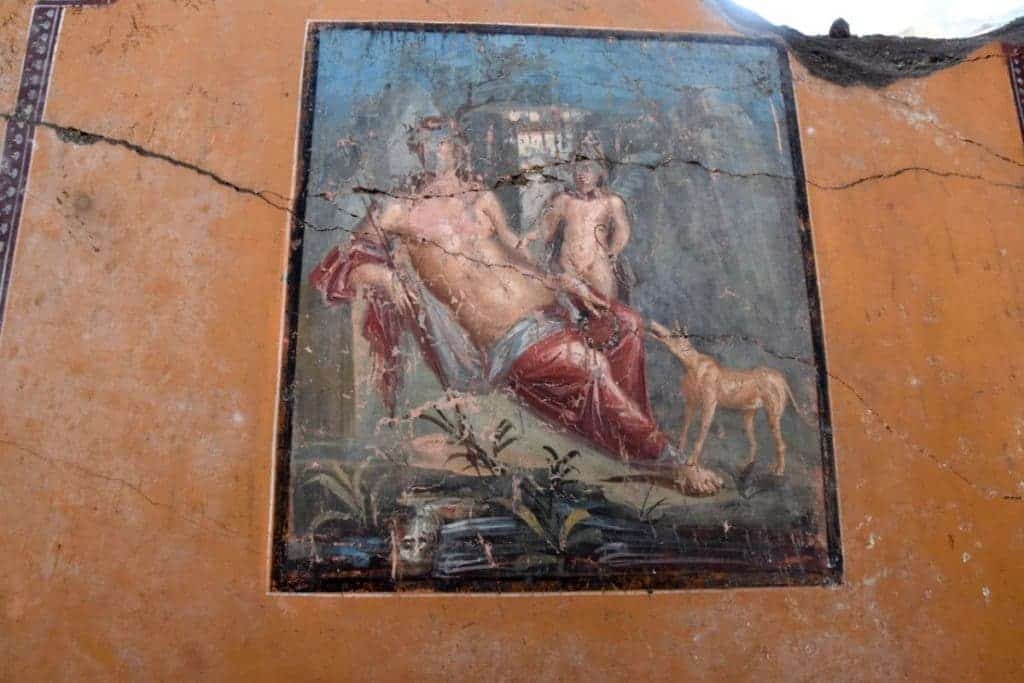
About 2,000 years ago, a wealthy Roman adorned his Pompeii villa with frescos depicting scenes from Greek mythology. Like countless other homes, the establishment was buried by ash and ejecta when Vesuvius erupted in 79 AD. Thousands of people and animals tragically met their death in the ensuing onslaught. However, the destructive force of Vesuvius also acted as an extraordinary medium that preserved remains, artifacts, and even some of these frescos.
Recently, Italian archaeologists revealed to the public one such striking artwork showing Narcissus reclining by a pool, his reflection staring back. Standing nearby is a winged figure who might be Eros, the Greek god of love, while a dog tugs Narcissus’ garment in a vain effort to pull him away. The fresco is extraordinarily well preserved given the circumstances and the colors are still remarkably vivid.
The lovely fresco was found adorning the walls of an atrium, which was the center of a house’s social and political life. This is where the head of the household would receive guests or clients for business appointments. Given that the atrium was a sort of waiting room where guests would spend a lot of time, it would typically receive the most attention and funds in the entire house. The more important and wealthier the head of the house was, the more lavish and well appointed with decoration the atrium would be.
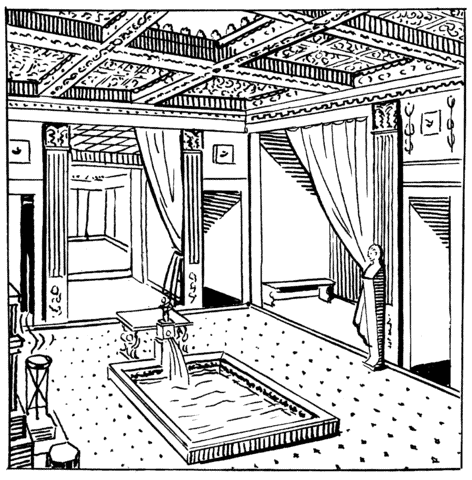
Inside the same house, archaeologists previously excavated a bedroom with a fresco depicting the rape of Leda by the god Zeus, a myth also known as Leda and the swan. This initial discovery prompted the excavation team led by Alfonsina Russo to dedicate more attention to the house, eventually leading to the discovery of the exquisite Narcissus fresco.
“The beauty of these rooms, which the initial discoveries had already made evident, has led us to modify the project and continue the excavation to bring the Leda room, and atrium behind, to light,” Russo said in a statement.
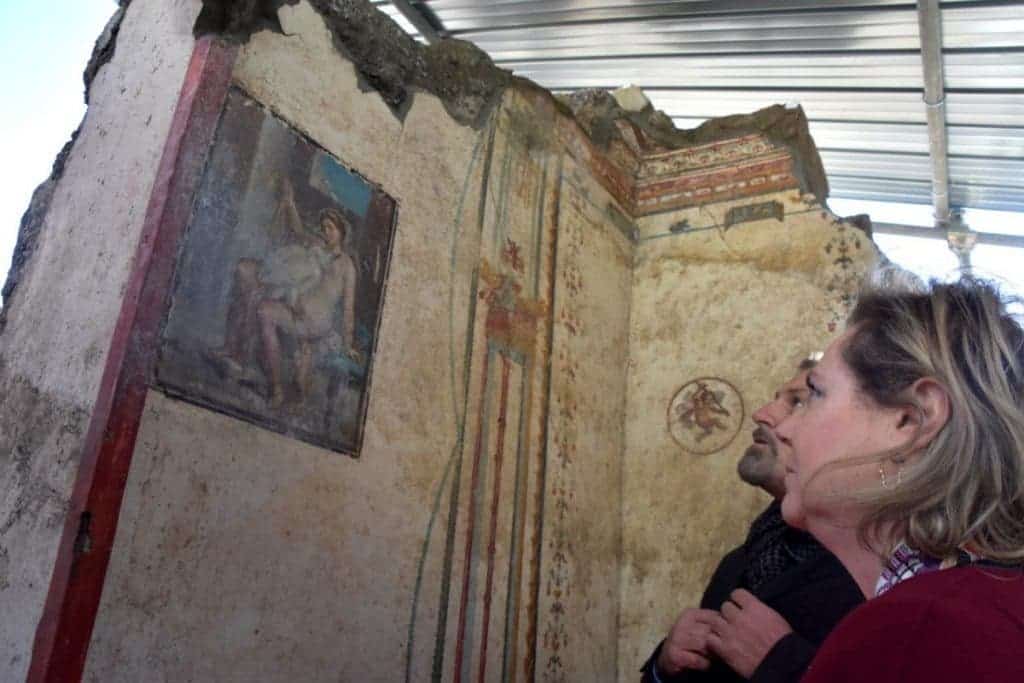
Even the entrance hall was carefully arranged, welcoming guests with the vigorous and auspicious image of Priapus, a minor Greek god of fertility and a protector of gardens, fruit plants, livestock, and male genitals. Elsewhere in the house, archaeologists found depictions of cupids, maenads, and satyrs.
“The extraordinary discoveries of this site continue,” said Massimo Osanna, an archaeologist who worked at the site. “The scene of the myth of Narcissus, well known and present elsewhere at Pompeii, is presented in the atrium of the house. The entire room is pervaded by the theme of the joy of living, of beauty and of vanity, which is further underlined by the figures of maenads and satyrs who accompanied visitors inside the public part of the house, as though part of a Dionysian retinue. This decoration was intentionally luxurious, and probably dated to the last years of the colony, as indicated by the extraordinary preservation state of the colours.”
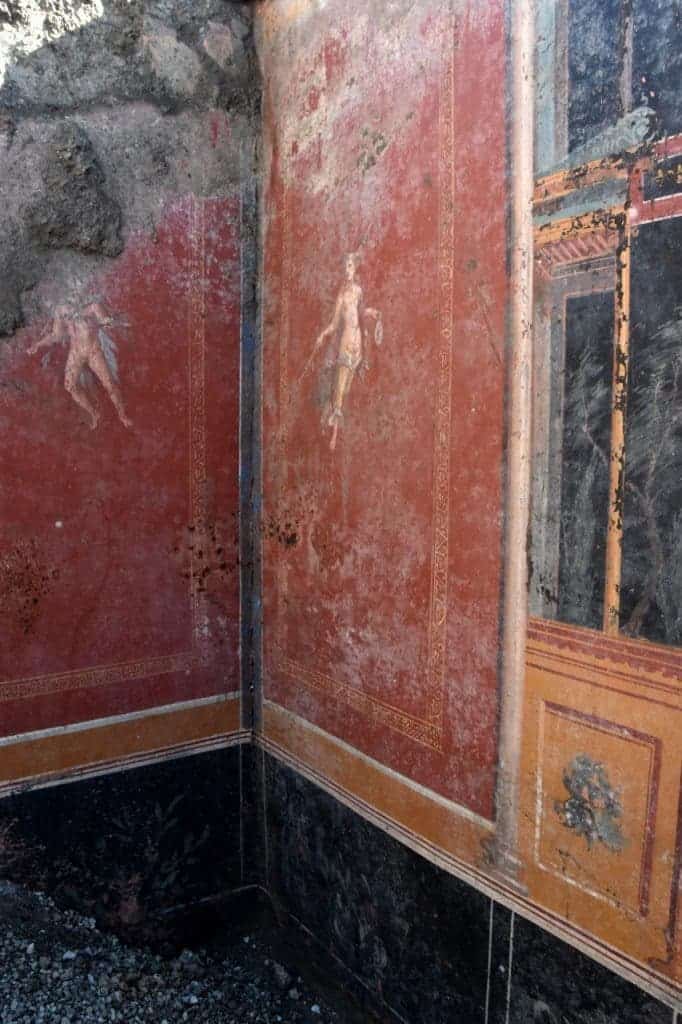
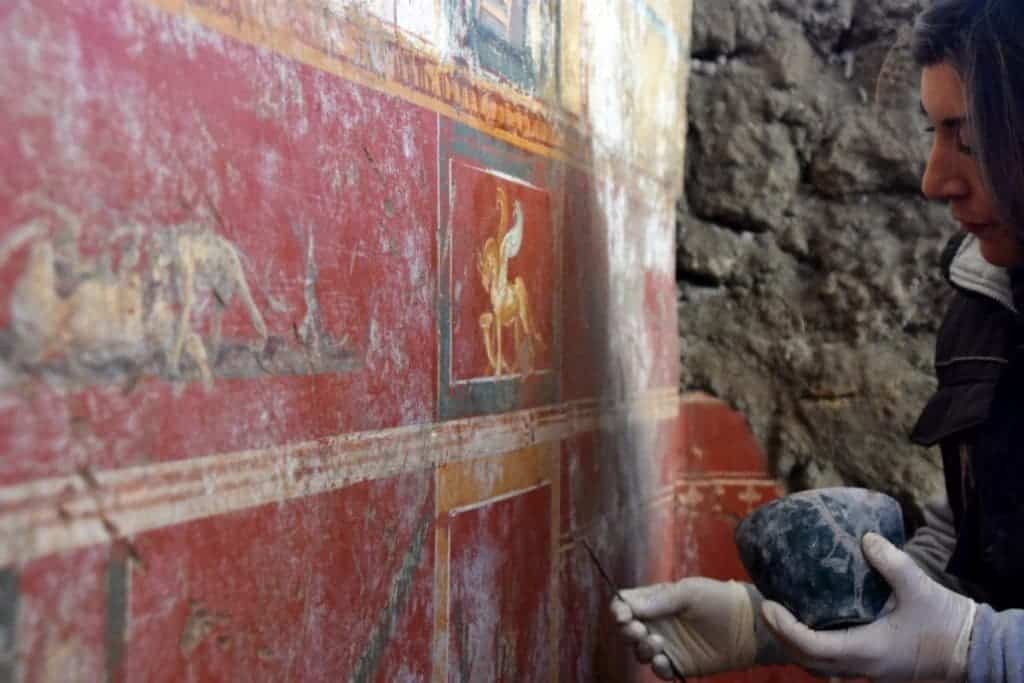
Greek myths were in vogue around the time this Roman house was built, thanks to works of the poet Ovid. The tale of Narcissus told by Ovid suffered some important alterations from the original Greek myth. According to Ovid, Narcissus was a young boy of extraordinary physical beauty. Once, when Narcissus was walking in the woods, the Nymph Echo saw him and instantly fell madly in love with the boy. She started following the handsome Narcissus, who, feeling someone was after him, asked: “who’s there.” Echo replied with the same words, “who’s there”, and this same exchange went on for some time until the nymph finally showed herself. She tried to embrace the boy, but Narcissus pushed her away. Heartbroken, Echo spent the rest of her days in misery, until nothing but an echo sound remained of her. Learning of the story, Nemesis, the goddess of revenge, punished Narcissus. When Narcissus saw his reflection in the pond, he was amazed by his own beauty. He fell in love with himself but seeing how he is never unable to touch his reflection, he too, like Echo, fades away.
The excavation at is part of a broader excavation overseen by the Great Pompeii Project, which covers a perimeter which runs 3km along the unexcavated area of Pompeii. More striking findings like this will likely surface in the future.


